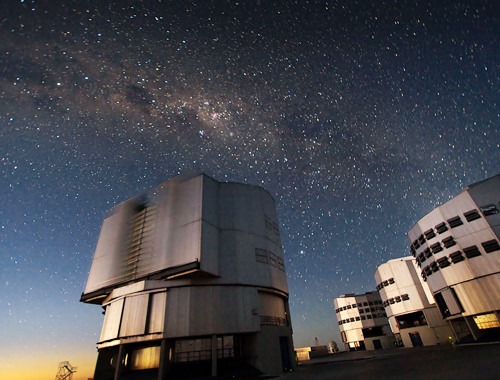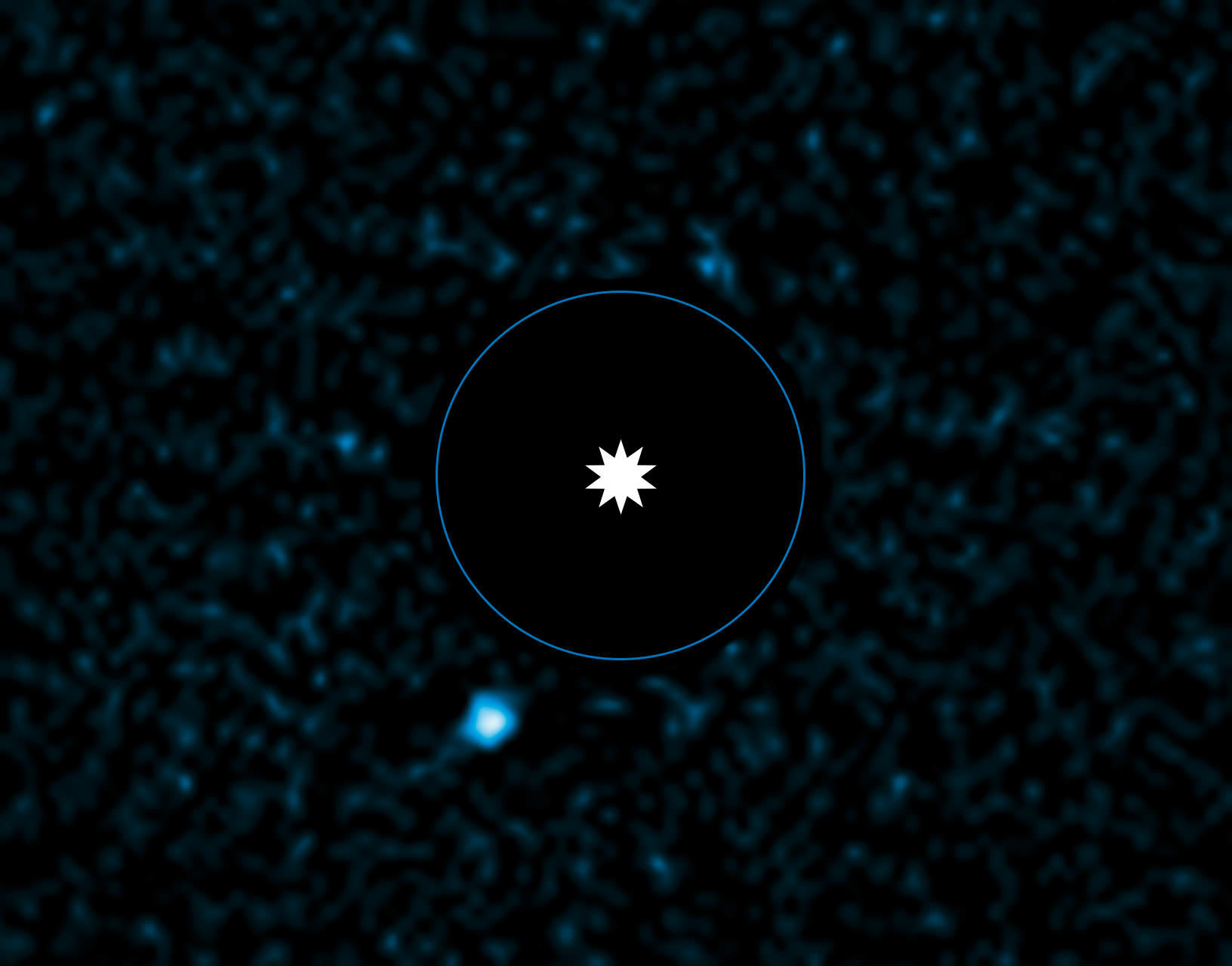We’ve found hundreds of planets outside the solar system, but taking a picture of one is still something quite special. The light of the parent star tends to greatly overwhelm the faint light of the alien planet. (So usually we learn about planets by tracking the effects each planet has on its star, like dimming light when it passes in front or making the star slightly wobble.)
This picture (above) shows HD95086 b, which astronomers believe is one of only about a dozen exoplanets ever imaged. It’s 300 light-years from Earth. The planet candidate is about four to five times the mass of Jupiter and orbiting a very young star that is probably only 10 million to 17 million years old. That’s a baby compared to our own solar system, estimated at 4.5 billion years old.
We still have a lot to learn about this object (and the observations from the Very Large Telescope will need to be confirmed independently), but so far astronomers say they figure that planet formed in the gas and dust surrounding star HD 95086. But the planet is actually very far away from the star now, about twice the distance as the Sun-Neptune orbital span in our own solar system.

“Its current location raises questions about its formation process,” stated team member Anne-Marie Lagrange, who is with the Grenoble Institute of Planetology and Astrophysics in France.
“It either grew by assembling the rocks that form the solid core and then slowly accumulated gas from the environment to form the heavy atmosphere, or started forming from a gaseous clump that arose from gravitational instabilities in the disc.
“Interactions between the planet and the disc itself,” she added, “or with other planets may have also moved the planet from where it was born.”
Astronomers estimate the planet candidate has a surface temperature of 1,292 degrees Fahrenheit (700 degrees Celsius), which could allow water vapor or methane to stick around in the atmosphere. It will take more VLT observations to figure this out, though.
The results from this study will be published in Astrophysical Journal Letters. The paper is also available on prepublishing site Arxiv.
Source: European Southern Observatory


How can its surface temperature be so high when it is so far from the star that it is orbiting?
Sometimes the friction produced from the constant stretching and contracting of a planet via the star’s gravitational pull is enough to produce immense heat in the core, which will manifest at the surface.
That’s interesting tho think of. Twice the distance as Neptune is to our Sun? That’s a long ways away to be as hot as it is. Maybe the star is massive?
No, the planet is just young and thus it still has high temperature. It will cool down as it ages and it will become much, much harder to observe.
Even “hot” planets aren’t hot enough to emit detectable light.
They are, especially on the infrared on which this observation was made.
The star is a white giant, far hotter and larger than our sun
http://www.astrostudio.org/xhip.php?hip=53524
It’s quite simple: It’s still young, 10-17 million years old, so the temperature is not that much tied to the star but to the planet’s own birth and it’s still cooling down.
Most planets out there are quite shy
But this one has captured our eye
It’s young and it’s hot
So easy to spot
And that’s why we look to the sky